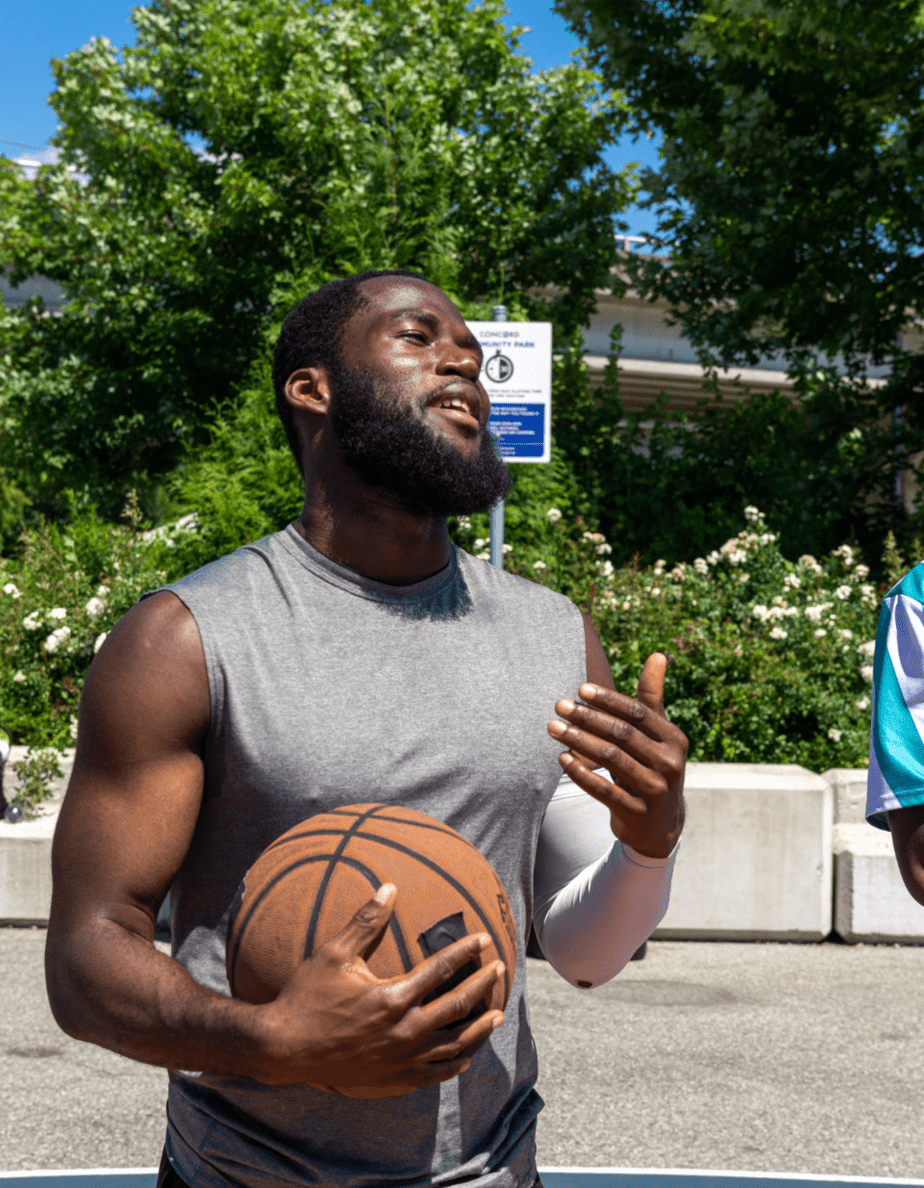Dunk Vertical Calculator: Vertical, Standing Reach, and Basketball Rim Height
I needed a dunk calculator because, at age 51, I set a goal to be able to dunk by my 52nd birthday. Yes, I understand, I need a different hobby. I had knee trouble during my last varsity high school basketball season. That, with a combination of weak hands and not much of a vertical leap to start with, ended my hopes of ever dunking.
There are a couple of dunk calculators out on the internet, but I was also interested in how to code one. So that is what I did. In this blog post, I’ll guide you through the ins and outs of the tool so you can calculate the vertical jump you will need for your first slam.
The Dunk Calculator: How It Works
The Dunk Calculator is easy to use and can provide spit out how many inches high your vertical jump will need to be to potentially dunk. Let’s break down the process step by step:
- Measure Your Standing Reach: Stand next to a wall, raise your dominant arm, and mark the highest point you can reach with your fingertips. Measure the distance from the floor to this mark in feet and inches.
- Input Standing Reach: Enter your standing reach measurements into the Dunk Calculator’s appropriate input boxes.
- Specify Rim Height: Standard rim height is 10 feet (120 inches), but you can input a different value if you’re practicing on a non-regulation rim.
- Extra Reach for Dunk: Estimate how many additional inches you need to reach above the rim to complete a successful dunk. This can vary depending on your hand size and dunk style. A good default value is 6 inches.
- Calculate Vertical Leap: Click the “Calculate Dunk” button to discover your required vertical leap to touch the rim and dunk.
For a better understanding, let’s take a look at a hypothetical example:
| Standing Reach | Rim Height | Extra Reach for Dunk | Vertical Leap to Touch Rim | Vertical Leap to Dunk |
|---|---|---|---|---|
| 7’10” (94″) | 10′ (120″) | 6″ | 26″ | 32″ |
In this scenario, our aspiring dunker needs a 26-inch vertical leap to touch the rim and a 32-inch leap to dunk.
Why You Need a Dunking Calculator
Let’s discuss why a Dunk Calculator is helpful for aspiring dunkers. Knowing your current vertical leap and the required jump height to dunk can help you set realistic goals and track your progress. Plus, it’s an excellent way to show off your improvement to your friends and teammates.
The Dunk Calculator takes into account your standing reach, the height of the rim, and the extra reach required to complete a successful dunk. By entering this information, you’ll discover the precise vertical leap needed to touch the rim and dunk like a pro.
Slam Dunk: A Brief History
We won’t go into depth on this as The Guardian has a great article on the rich history of slam dunks. As a staple of modern basketball, the slam dunk has its roots as early as 1936, with players like Joe Fortenberry dunking in the Olympics and Bob Kurland recording the first dunk in college basketball in 1944.
Fast forward to today, and the slam dunk has evolved into a jaw-dropping spectacle, with athletes like Michael Jordan, Vince Carter, and LeBron James showcasing their gravity-defying abilities. You can check out 5′ 7″ Spud Webb winning the 1986 dunk contest in the video above.
Will I Be Able To Dunk
That is a good question. I have about 6 months left until my 52nd birthday, and it isn’t looking great at this point. I know, using my new dunk calculator, based on my standing reach (7’11”) with a 6″ inch cushion I have to get to a 31″ vertical jump. That may not be attainable now that I look at the number. Sadly, I just measured my vertical jump off 2 feet and we are looking at around 15 or 16 inches. I need another 10 inches just to get some rim. Now that you know your required vertical leap, hopefully, you have a better shot than I do.
Troy Wallace
Troy Wallace is Certified Basketball Speed Specialist and shares his experiences in trying to stay as healthy as possible to stay on the court. He is active in coaching youth basketball in YMCA, Team Work Sports Nebraska, and, currently, in the Jr. Warriors program in Omaha, NE. Visit Troy's Full Author Bio Page or email him directly.
Meaningful conversations happening daily about training, recovery, and injury-specific rehabilitation as well as sport-specific discussions on playing, coaching and refereeing your favorite sport. We welcome experts and those with curious minds seeking answers.
Join The Stay On The Court Community!